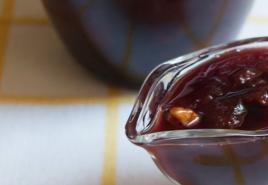Small lark. The songbird is the sky lark. Characteristics of a lark. description
Area. Southern Europe, northern and eastern Africa, Western and Central Asia.
In Europe, the northern border of the little lark passes in France at the southern borders of Brittany and Champagne, leaves Italy and the Balkan Peninsula to the south (Herzegovina, Dalmatia and Romania are included in the nesting area, in some places the bird nests in Hungary), further to the east along the southern parts The USSR north to Kiev, Poltava and Kharkov regions, to Kamyshin and Pugachev and then goes to Orsk.
To the south from here - to the shores of the Mediterranean Sea, Crimea and the Caucasus and on the islands: Balearic, Corsica, Sardinia, Sicily, Malta, Crete and Cyprus.
In Africa - Tunisia, Algeria, Morocco, the northern parts of the Sahara, Tripoli, Egypt, in the eastern part of the mainland - Sudan, Abyssinia and south through Rhodesia to the Cape Land.
In Asia - Asia Minor, Syria, Palestine, the southwestern corner of Arabia, Iraq, Iran without its coastal parts and southern Baluchistan, Afghanistan. To the east, the southern boundary of the species is not entirely clear.
The northern border of the species lies in the USSR, it covers from the north the southern Transbaikalia (approximately near Aga) and the steppe part of the Minusinsk Territory, leaving the Tuva region to the south. and southeastern Altai, the rest of Altai remains outside the breeding range of this bird. To the west, the little lark nests in the Zaisan depression, and to the north of it it is found near the village. Novensky, from where the border goes somewhat east of Ust-Kamenogorsk and Semipalatinsk and further almost to Omsk (although the border of continuous distribution still runs to the south - between Pavlodar and Semipalatinsk), then to the west the border goes to Orsk. South of the delineated northern border in the USSR, the small lark is widely distributed, although somewhat unevenly.
Nature of stay. In the northern regions, the little lark is a nesting, migratory bird. In the rest - sedentary.
Biotope. Open steppe and desert spaces, rocky, gravelly, clayey, sandy soils and salt licks with stunted vegetation, wormwood steppes, sparse, low-growing shrubs.
Subspecies and varying characters. It is divided into 9 subspecies, 3 of which are found in the USSR.
Reproduction. Singing is not difficult. The nests are of the usual lark type, in a hole on the ground under a bush of wormwood or some kind of grass, shaded and covered, made up of dry stems and leaves of herbs quite neatly. Clutch of 4-5 eggs in April - May; the second - in June - early July. The eggs are light, whitish or pinkish-brown with brown, brownish or grayish blurry and sharp spots, condensing towards a blunt end.
Dimensions of eggs of the small lark: 17.5-23.8x13.4-15.2, on average 19.7x14.6 mm. Flight young of the first hatch are found from the end of May, of the second hatch - in early August. According to Lisetsky's observations, in the Elton steppe in the Volga region, newly hatched little lark chicks weigh 1.8 g, on the next day - 2.8, on the third - 6.2, on the fourth - 8, on the fifth - 10.6, on the sixth - 13.2 g, on the seventh day the chicks left the nest.
According to the same observations, food was brought to the chicks from dawn to dusk, 10-13 times per hour. At noon the number of deliveries dropped to 6 per hour. The breaks between deliveries ranged from 2-3 to 6-10 minutes with 13 arrivals per hour and 15-20 with 6. In the latter case, after 2-3 deliveries with a break of 3-4 minutes, a longer break occurred. In total, 180 feed deliveries were counted during the day.
Shedding. Not studied in detail. In general, like other larks.
Nutrition. The summer diet of the little lark is dominated by insects. Thus, in the stomachs of larks, which we caught on June 3-18 in the Azov steppe, we found four species of ants, darkling beetles, leaf beetles, scale insects, flea beetles, weevils, soft beetles, bugs, ichneumon wasps, moth pupae, as well as wheat and barley grains . In Askania-Nova, Reshetnik (1937) in the summer also found many ants, remains of locusts and grasshoppers in the stomachs of these larks. In the Elton steppe (Volchanetsky, 1950), grasshoppers, locusts, bugs, ground beetles, borers, longhorned beetles, leaf beetles, weevils, dung beetles, flies, ants, ichneumon wasps, butterflies and caterpillars were found in the stomachs of the lesser lark.
Among the plant foods in summer, the little lark eats, in addition to grains of wheat and rye, millet and chumizu. Near Askania in the spring, the stomachs of the larks were filled with weed seeds: acorn grass, knotweed and vegetative parts of the viviparous bluegrass.
Economic importance small lark is positive. Like other larks, it eats many harmful insects. Since it is less common in fields than in non-arable land, it is useful in eliminating pests in their reserves. By eating grains of cultivated cereals, he cannot cause harm, since he picks up carrion, and the ears are inaccessible to him. According to Reshetnik’s observations, weed seeds do not lose their viability after passing through the lark’s intestines. Thus, larks can spread weeds. This type of activity of larks is completely ignored in practice. Still, in the steppes - wild and cultivated - larks constitute almost the only group of insectivorous birds, and their population density reaches 2-3 pairs per 1 hectare. The benefits brought by them by eating harmful insects must be significant.
Contract - Song passerines
Family - Larks
Genus/Species - Alauda arvensis
Basic data:
DIMENSIONS
Length: 18-19 cm.
Wingspan: 30-36 cm.
Weight: male - 30-45 g, female - 25-38.
REPRODUCTION
Puberty: in year.
Nesting period: from April.
Carrying: 2 per year.
Number of eggs: 3-5.
Incubation: 12-14 days.
Feeding chicks: 8-11 days.
LIFESTYLE
Habits: The skylark (see photo of the bird) defends the territory during the mating season, but at other times it is quite friendly.
Food: worms, insects, seeds, plants.
Lifespan: 5-6 years, in captivity up to 12 years.
RELATED SPECIES
Woodlarks and horned larks live in Central Europe.
The skylark is considered the first harbinger of spring. The lark is a bird typical of the rural landscape. Its characteristic trills are heard over the fields and forest edges. Due to the development of agriculture, human use of agricultural machinery, mineral fertilizers and pesticides, the number of larks began to decline.
REPRODUCTION

Skylarks return from their wintering grounds in March or April. The male begins to attract the attention of females by singing. It usually sings in flight, flying almost vertically upward until it becomes almost invisible. Constant singing is also a way to mark an area. The male's plumage during the breeding season is as inconspicuous as in other months, but the bird compensates for this with beautiful singing. He flies up and hovers in the air, singing his song. This continues for several minutes, then suddenly the male, continuing to sing, folds his wings and falls down like a stone. Only at the last moment, near the ground, does it spread its wings to land successfully. The female makes a nest in a hole, weaving it from blades of grass and small roots. Then it lays up to 5 beige eggs with dark brown spots. The eggs incubate for 12-14 days. From the beginning of spring to the end of summer, skylarks have two, and sometimes even 3, clutches. The male continues to sing even when the female is already busy arranging the nest and incubating the eggs. The chicks leave the nest at the age of 10-14 days, but for some time they still depend on their parents. Having taken refuge not far from the nest, they wait for them to bring food. The parents take care of the chicks together, and together they look for food for them.
WHAT DOES IT EAT?

The lark's diet is varied. In summer, he catches caterpillars, centipedes, various insects and earthworms. At least half of his food is not of animal origin, but of plant origin. In autumn and winter, these birds eat grass seeds and cereal grains (mainly wheat). Birds eat green parts of plants. In grain fields, large flocks of larks can cause damage by feeding on young shoots. This is because larks' favorite food is weeds.
WHERE DOES IT LIVE?
The lark prefers flat and rolling plains, open, grassy pastures, wetlands and even wet meadows. The lark finds especially good living conditions on the sea coast, in meadows and pastures that are rarely used, where mainly sheep graze and where a proper place for a nest can be found. The lark can also adapt to life in poor low-lying marshes.
LARK AND MAN
The skylark has been sung by many poets and composers for centuries. Europeans tried to acclimatize this bird in different countries of the world. The lark was also often kept at home. For many people, lark meat is still a delicacy. By the beginning of the 20th century. it was also used in European countries. In Central Europe today it is prohibited, but in some countries of Southern Europe larks are still hunted. Except for the nesting period, larks gather in large flocks, which cause serious damage to seedlings of grain crops. Modern agriculture occupies more and more territories suitable for the habitat of these birds and, unfortunately, the number of larks is constantly decreasing.
LARK OBSERVATIONS
A gray-brown lark tries to hide its nest in the thick grass as best as possible. The bird places it on the ground, in a small depression among the bushes. Having arrived, the lark never sits next to him. The male can be recognized by his characteristic singing, which sometimes lasts 15 minutes without a break, although the singer himself is visible as a small dot high in the sky. He also sings on the ground, but if he is alarmed, he immediately rises into the air without stopping singing. The skylark sings throughout the mating season. Only on foggy days and in August-September, during molting, does its singing cease.
- Once upon a time, people tried to teach the lark to follow certain melodies. In 1917, a collection of musical works created for skylarks, woodlarks and other species of birds was published. They had to be played on a special flute - a harmonic.
- Like all songbirds, larks must learn their song. This is confirmed by the fact that a young lark, taken from the nest even before it learns the song of its parents, can accurately repeat other melodies it has heard.
- The songs of most birds of the same species living in different parts of the world tend to be very different. But all skylarks in the world sing the same way.
- The lark is one of the few songbirds in Central Europe that migrates on the ground. The male regularly jumps into the air during mating.
- Larks that live in nature are good imitators. They perfectly imitate the voices of other birds.
- The skylark often becomes a victim of the sparrowhawk. But when he manages to free himself from the claws of the predator, he quickly flies away as far as possible and continues his song.
CHARACTERISTIC FEATURES OF THE LARK. DESCRIPTION
Plumage: the back is light with dark brown spots, the underside is whitish, and there is a small crest on the head.
Feeding the chicks: The parents bring food to the chicks together. They never fly directly to the nest, they always fly a little further so as not to attract predators.
Nest: hidden in a hole on the ground, woven from grass and roots. Often lined with animal hair.
Male: flies upward and sings tirelessly. It can rise to a height of more than 300 m and hover in the sky.

- Habitat of the skylark
WHERE DOES IT LIVE?
Throughout Europe, except its northernmost regions, in North Africa and most of Asia. It was introduced to Australia and New Zealand.
PROTECTION AND PRESERVATION
In recent years, as a result of intensive agricultural development, the number of skylarks has noticeably decreased.
Sky lark. Video (00:02:56)
Bird calls - Skylark (Alauda arvensis). Video (00:01:02)
Many hobbyists keep skylarks in captivity. A tamed young male is capable of singing 8 hours a day. These birds live in captivity for up to 10 years, which practically does not occur in nature. This bird is shy, only very experienced poultry keepers can keep it, who can provide the lark with the right diet, otherwise the bird will be scared and the one who keeps it will never hear the famous song of the little singer. Naturally, humans are not able to provide the nutrition that birds have in nature, but there is a special grain mixture for larks, which consists of oatmeal, millet, canary seed, rapeseed, rapeseed, lettuce and flax. In addition to the grain mixture, birds need soft food, which is made up of grated carrots, a hard-boiled chicken egg, and mealworms are added to the food, without which the male refuses to sing. In order to replenish the diet with mineral feed, small shell rock, fine river sand and charcoal are included in the diet. Freshly caught birds are fed mealworms and white bread soaked in milk. Gradually, the birds become tame and take food from the owner’s hands.

- Class: Aves = Birds
- Subclass: Ornithurae, or Neornithes = Fan-tailed birds, new birds
- Superorder: Neognathae = New palate birds, neognathae
- Order: Passeriformes = Passeriformes, passeriformes
- Suborder: Oscines = Singers
- Family: Alaudidae = Larks
- Genus: Calandrella Kaup, 1829 = Lesser Larks
- Species: Calandrella cinerea (Gmelin, 1789) = Lesser lark
Species: Calandrella cinerea = Lesser lark
Genus: Calandrella Kaup, 1829 = Lesser Larks. The old name of the lesser lark is Calandrella brachydactyla. Subspecies: Calandrella cinerea longipennis Eversmann, 1848 (Calandrella cinerea artemisiae Bankovsky, 1913 Calandrella cinerea orientalis Sushkin, 1925).

The lesser lark is a small lark, about the size of a sparrow, which is why it is called small. The body length reaches only 160 mm, with a weight of about 20 grams. In general, it is more graceful and smaller than other representatives of the Lark family. The coloration of the lesser lark is of the “lark” type, although less variegated. The top of its body has brownish feathers with dark longitudinal streaks, and the eyebrow, underside of the body and stripes on the sides of the tail are buffy-white. The lesser lark has a chest without streaks, but on the sides of the chest there are dark (brown) spots, clearly visible only at a short distance. Males and females are practically indistinguishable in appearance, although the male has more pronounced dark spots on the sides of the chest.
In Kazakhstan, the lesser lark is one of the most numerous larks. But in the Krasnoyarsk Territory it is mostly a rare bird, although in some places in the steppes of the Minusinsk Basin it is common. The little lark is also found here and there in the forest-steppe: here lies the northern border of its range. In the area between the Yenisei and Abakan rivers, where the Koibalskaya steppe is located, the little lark is a common nesting species with a population density of up to 10 individuals/km2. It is quite numerous in the Shirinskaya steppe near Solenozerny, as well as in the Iyus forest-steppe, where it adheres to young forest plantations and shrub belts.
The Little Lark breeds and is found on migration in most of lowland Kazakhstan, walking north to Kustanai, Lake. Selety-Tengiz, and in the Pavlodar Trans-Irtysh region to lakes Zhamantuz and Svetlitsa. Recorded at nesting sites in the Abakan steppe and near Minusinsk, as well as in the steppes along the river. Abakan and Khakassia along the river basin. Chulym. Single individuals were encountered in the summer 180 km northeast of Kustanai, and in Southern Altai, on lake. Markakol, on the outskirts of Krasnoyarsk.
 The little lark is a migratory species that usually arrives at nesting sites in March and flies away in September-October. The little lark winters further south, starting from the southern regions of Turkmenistan. Lesser larks love hilly terrain, which alternates with bald patches and rocky areas. But they avoid thickets of tall grass, even if it is sparse. They also do not settle on cultivated lands.
The little lark is a migratory species that usually arrives at nesting sites in March and flies away in September-October. The little lark winters further south, starting from the southern regions of Turkmenistan. Lesser larks love hilly terrain, which alternates with bald patches and rocky areas. But they avoid thickets of tall grass, even if it is sparse. They also do not settle on cultivated lands.
The little lark usually sings while in the air, jerking upward. His song is a collection of short chirps that can be rendered as: "witti-witti, wit-ti, tirrii-ti-ti-ti." Its diet, like that of other larks, consists of various seeds of herbaceous plants, as well as all kinds of insects and their larvae.
The female builds the nest on the ground. in a hole, under a bush of wormwood or cereals. Usually she tries to find a natural hole, which is located somewhere under a tuft of grass, and most often it is a low bush of wormwood. The female, if necessary, can dig a hole of the required size herself. The material for building the nest is dry grass, and the little larks line the tray itself with plant fluff and various thin fibers, as well as tousled blades of grass and soft panicles of cereals. Upon completion of construction, the result is a rather loose structure. Often the outside of the nest is lined with lumps of earth and manure. A fully completed clutch usually contains 4-5 whitish or pinkish-brown eggs, with brown spots scattered over the surface.
The lark (Alauda arvensis) is a small bird of the lark family. This small bird is known for its rather loud and melodious singing.
| Length: | 18-19 cm. |
| Wingspan: | 30-36 cm. |
| Weight: | male – 30-45 g, female – 25-38. |
| Puberty: | in year. |
| Nesting period: | from April. |
| Carrying: | 2 per year, 3-5 eggs |
| Incubation: | 12-14 days. |
| Feedingchicks: | 8-11 days. |
| Food: | worms, insects, seeds, plants. |
| Lifespan: | 5-6 years, in captivity up to 12 years. |
Description
The lark bird has a protective color to match the color of the soil, very small or medium sizes: weight 15-80 g, length 10-25 cm. The lark's legs are short, but perfectly adapted for moving on the surface, because the bird finds its food on the ground: insects, mollusks, plant parts (buds, seeds, flowers, etc.). On the ground, the lark makes a nest, camouflaging it with a tuft of grass, a bush, or a stone.
Area
Larks live in steppes, meadows, fields, deserts, semi-deserts, and only a few species (75-90 in total) are found in forest clearings, forest edges, and mountains (up to 4000 m altitude). The only place where you won’t find this little bird is the forest. After wintering, skylarks fly to the nesting site in early spring, when there are still no insects for food, they stay in small flocks in areas warmed by the sun, and hide from the wind and rain on the edges.
The range of the skylark is very extensive, it includes almost all of Europe and most of Asia, as well as the mountains of North Africa.
Nutrition
The lark's diet is varied. In summer, he catches caterpillars, centipedes, various insects and earthworms. At least half of his food is not of animal origin, but of plant origin. In autumn and winter, these birds eat grass seeds and cereal grains (mainly wheat). Birds eat green parts of plants. In grain fields, large flocks of larks can cause damage by feeding on young shoots. This is because larks' favorite food is weeds.
Nesting

Birds begin breeding 2–4 weeks after arrival. Like all larks, they nest in separate pairs. The nest is built on the ground, among crops of various agricultural crops, in a meadow or pasture, in areas with not very dense and high grass, on boundaries, in moist places - on hummocks or at their base. In this case, they either use a ready-made depression in the soil (a trace of ungulates) or make it themselves.
The nest is quite loose and consists of dry grass stems, roots, and straws. Its inner part is lined with thinner, soft blades of grass mixed with horsehair, and in some cases, wool. The skylark's nest is most often placed under a bush of grass, skillfully covered and well shaded, so it is almost invisible. Nest diameter 8-11.5 cm; tray depth 4-5 cm, diameter 7-7.5 cm.

In a full clutch there are 4-5, less often 3 or 6 and, as an exception, 7 eggs. The shell has a weak shine, off-white or yellowish, in some cases bluish-gray. Specks and specks of dark gray, brown and dark brown colors of different sizes are densely scattered across its entire surface, often forming a corolla at the blunt end. Egg weight 3.5 g, length 20-25 mm, diameter 15-18 mm.
Offspring

There are two broods per year. The first fresh clutches are found in late April - early May, the second - in June. The female incubates for 14 days. In case of danger, she tries to leave the nest in advance (only sometimes she flies off the nest from right under her feet).
Chicks of the first breeding cycle appear in the second half of May, of the second cycle - in the third ten days of June - the first half of July. The chicks hatch covered with long gray down, but are blind and helpless, so that the rest of their development, like that of other passerines, proceeds according to the nestling type. Not yet able to fly, at the age of 9-10 days, young larks leave the nest. For some time, the parents continue to feed them. At the age of 18–20 days, young larks begin to fly and forage independently. The young fledgling occurs in the second half of June - early August. The young ones that have grown up gather in flocks and wander through the fields and meadows. In August, adults and young roam through stubble, pastures and fields.
These birds fly away in September - October, some birds are found until mid-November (in the south of Belarus). Birds fly not only during the day, but also at night in small flocks (sometimes alone), silently or emitting calling calls.
Wintering

Larks are migratory birds, but they do not fly far from the nesting site and are among the first to return. The mass arrival begins even when the snow has not melted, at the very beginning of March. The males are the first to arrive; it is the males who occupy the first thawed areas, warmed by the sun, where they gather in groups and bask in the sun. Then the females arrive. They are the ones who are looking for the most convenient place for nesting, while the male is busy guarding and singing.
Enemies of the lark
Singing high above the ground makes the skylark very vulnerable. , the main enemy of these small birds, hunts only in flight and it is difficult to find a better target than a male lark carried away by singing. Only his famous fall to the ground like a stone can save the little singer, but still many males die precisely at the height of their famous song.
The skylark has enemies not only in the sky, but also on the ground. These are predators like and, and, and, and are very fond of destroying the nests of the little singer, drinking eggs or eating small and defenseless lark chicks.
Kinds
Field lark / Alauda arvensis

The skylark is a medium-sized bird, the size of a house sparrow: its body length is about 180 mm, its weight is about 40 g. The body is dense, the head is large with a relatively small cone-shaped beak. The bird looks a little heavy, but it runs quickly and deftly along the ground. The hind toe is armed with a very long, spur-like claw. The plumage of the dorsal side of the body is earthy-brown with yellowish-grayish-white dashes and black-brown spots. The head, throat, upper chest and sides of the body are rusty-brown with dark stripes; the rest of the chest and belly are yellowish-grayish white. There are two light, faint transverse stripes on the wings.
The tail is brownish-black, with a shallow notch at the end, the outer tails are white. Skylarks are widespread throughout the Palearctic (except for the tundra, Anadyr region and some desert regions of the extreme south, Central and Central Asia), as well as in northern Africa. Along with several other European birds, the skylark was introduced by humans to North America and New Zealand. Larks fly away from the northern regions of their habitat for the winter; in the southern regions they lead a sedentary lifestyle. These birds winter in Western Europe, southern Asia and northern Africa.
Common Lark / Ammommanes deserti

The finch's coloration is sandy-grayish, the ventral side is whitish with an ocher tint. The plumage of the bird is loose and soft. This is a medium-sized lark: its length is about 175 mm, weight 30 g. Finches inhabit the desert areas of North Africa from Algeria to the Red Sea (in Algeria, Libya, United Arab Republic, northern Sudan, Ethiopia and Somalia), Arabia, Iraq, Iran , Afghanistan, Pakistan and North-West India, as well as southern Central Asia.
The favorite habitats of this lark are low, barren rocky mountains, clayey plains, and semi-desert areas. Here it leads a sedentary lifestyle, making only small vertical migrations in the mountains and descending to the plains in winter. This bird avoids vast sandy deserts, as it needs close proximity to water: several times a day, finch larks fly to a watering hole. At the same time, this is one of the few birds that can withstand the scorching sun of the Arabian Desert and the Sahara. During the hottest hours of the day in June and early July, you can hear this bird singing in the absolutely silent desert. The song of the finch is melodic and very pleasant to the ear. Birds nest twice a summer. They feed on butterfly caterpillars, beetles, and spiders; They often peck seeds, as well as young shoots of plants.
Wood lark / Lullula arborea

The wood lark is very similar in appearance to the skylark. The difference is that the wood lark is slightly smaller (length 160 mm), its tail is shorter and there is a barely noticeable crest on its head. Wood larks nest in northwest Africa, Western and Central Europe (except for the far north), the Caucasus, Asia Minor and somewhat south of it. In the southern parts of the range they are sedentary; from the northern ones they fly to southern Europe, northern Africa, and northwestern Asia for the winter. In spring, wood larks inhabit forest edges, clearings, wide clearings, overgrown burnt areas and clearings.
With their habits - staying in the crown of a tree, running quickly along the ground, chasing some insect, singing while sitting on a high branch, and even making a nest at the foot of a tree, bush, under the protection of a hummock or stump - they are not at all similar to larks, but they are very reminiscent of the forest pipit, with which they are often confused. The song of the wood lark is a quiet but melodious “yuli-yuli-yuli, yuli-yuli-yuli-yuli”, which the bird often sings in early spring, rushing over the treetops. This is why people call this bird a spinning top.
Lesser Lark / Calandrella cinerea

The lesser lark is called small because it is smaller and more graceful than most other representatives of this family. Its length barely reaches 160 mm, and its weight is about 20 g. The coloring of this bird is of the lark type, but less variegated, and there are dark spots on the sides of the neck, clearly visible at a short distance. Lesser larks are common in Southern Europe, Western, Middle and Central Asia, Northern and Eastern Africa. In the northern regions of their range, these birds are found only for nesting, and fly to warm countries for the winter. In the rest of their range they lead a sedentary lifestyle.
Song lark (Javan lark) / Mirafra javanica
The song lark is widely distributed from Northeast Africa, through western parts of Asia, south to Australia. The Javan lark is perhaps the smallest representative of the larks: its length is only 130 mm. The top of the bird is brown with black spots, the ventral side is light brown. The beak of the Javan lark is similar to the beak of a granivorous bird - strong and shorter than that of other types of larks.
The Javan lark leads a sedentary lifestyle, but in the south of its range (in South Australia) it is a migratory bird. It is found not only among bush thickets: for example, in Australia it often nests on open grassy plains (including among agricultural lands), in vast forest clearings; does not avoid being close to humans - it willingly settles on the lawns of parks, squares, sports grounds, etc.
The song of the Javan lark is long, consisting of very diverse, although sometimes sharp sounds of varying frequencies, and is very melodic. The bird sings while sitting on a branch of a bush, on a hummock, or performing a kind of fluttering current flight. It is usually heard on quiet, cloudless moonlit nights. The nest is located in a small depression on the ground among thick grass covering the building from above. The bottom and walls of the nest are lined with a thick layer of grass, and the walls extend so high upward that the entire structure is almost dome-shaped, with a wide entrance on the side or top. The clutch often contains 3–4 gray-white eggs, speckled with olive, dark gray and brown colors.
Desert Lark / Alaemon desertorum

The desert lark has a coloration that is completely in harmony with its surroundings. The predominant color in the plumage of this bird is sandy gray, with a slate tinge on the forehead and upper tail coverts. The primary flight feathers are black with white bases; the tail feathers are black with yellowish rims, but the middle pair of tail feathers are yellowish-brown with wide yellowish edges. The throat and belly are white; crop and chest, yellowish with black spots. This is the largest of the larks: its length is about 230 mm. The beak of this bird is unique: unlike the beaks of other larks, it is long and thin, slightly curved down at the end. The desert lark's toes and claws are very short.
These larks inhabit the arid plains of Africa and Arabia, meeting east to Afghanistan and Western India. These birds are especially willing to inhabit sandy deserts. The desert lark is a real desert bird, running very quickly on the ground and skillfully hiding thanks to its protective coloring. During the mating season, males produce a short and not very melodious song. Usually in May, the formed couple makes a small hole in the sand; in this hole a nest is made from dry blades of grass. The clutch consists of 3–4 grayish-white eggs with yellow-brown spots. After the chicks fly out of the nest, the whole family stays in a small flock until spring. Desert larks feed on various desert insects, as well as seeds picked up from the ground.
Rasuna lark / Alauda razae

Razun skylark - a small bird is closely related to our skylark, to which it is very similar in plumage color, size and habits. However, its beak is much longer and stronger, which allows it to easily dig out insect larvae and small soil invertebrates on which this bird feeds from the ground. The Razunsky lark sings, flying up steeply, and finishing the song, it falls vertically downwards, and does not fly in a spiral, as the skylark does. It is believed that this type of current flight is an adaptation to life on a small piece of land (Razu Island has an area of only 8 km2), the only place on our planet where the Razu lark lives.
Horned lark / Eremophila alpestris

The horned lark differs from other larks in the presence of elongated feathers on the sides of the crown, forming very distinctive ears, or horns (in young birds they are not clearly expressed). Its dimensions are average for birds of this family: length 180 mm, weight 36–39 g. The claw of the hind finger is long and straight, the beak is short and weak. The coloring is very characteristic. An adult male has a grayish dorsal side with a pinkish tint, and a whitish ventral side. Against the background of this nondescript coloring, the mask stands out sharply: the forehead, throat, brow stripes, back of the cheeks, and neck are gray-yellow; The front part of the crown, horns, cheeks, a wide transverse stripe on the crop and the lower part of the throat are black. Females are paler in color.
Young birds are brown above with buffy streaks and spots, dirty buffy below, with brown spots on the sides and craw. Of all the larks, the horned lark is the most northern. It inhabits the tundras of Europe, Asia and North America, and is also widespread further south: in Northwestern and Northern Africa, Northern Arabia, the Balkans and from Asia Minor east to the western and northwestern provinces of China. Ubiquitous in North America, also breeds isolated in some northern regions of South America.
Crested Lark / Galerida cristata

The crested lark differs from other larks in having a rather large crest on its head. In addition, it is larger than them (its length is 180–190 mm, weight is about 45 g). The plumage color of the crested lark is grayish-brown with an ocher tint and dark streaks on the dorsal side; The ventral side of the body is buffy-white, with black-brown streaks on the crop and upper chest. The crested lark is widespread in the countries of Western and Central Europe, in the south of the European part of our country, in the Caucasus and Transcaucasia, in Central and Western Asia, in a large part of China, India and Pakistan and on the Korean Peninsula, as well as in North Africa (where penetrates south almost to the equator).
Throughout its vast range, this lark forms about 40 geographical forms (subspecies), differing from each other in size and details of plumage color. The subspecies living in the north of the range lead a migratory lifestyle, but those that inhabit the southern parts of the range, especially numerous in Africa, are sedentary and partially nomadic birds.
Black lark / Melanocorypha yeltoniensis

The black lark is different in color, build and size from most other larks. This is a large lark: its length is 200 mm, its weight is about 60 g. The bird’s beak is thick and strong. The coloring is especially peculiar: unlike all larks, and most other passerine birds, the plumage of males is black, but the shoulders, flight feathers and tail feathers, as well as the feathers on the sides of the chest, are trimmed with a pale stripe. Because of this, against the background of black plumage, the back and sides of the bird seem covered with whitish crescent spots. By spring, the bird, which has already feathered (the light edges of the feathers are trimmed by this time), seems completely black. The bird's jet black color is complemented by black legs and dark brown eyes.
And only the grayish beak stands out sharply against the general black background. The female is blackish-brown above, with pale brownish-gray edges of feathers. On the ventral side it is dirty-whitish, with brown spots on the crop and sides of the body. Young birds are colored similar to the female, but their plumage has more dirty shades. The distribution of the black lark is limited - it is endemic to Russia. These birds nest in wormwood steppes, semi-deserts and salt marshes of the lower reaches of the Volga and in Kazakhstan. Although these are non-migratory birds, in the fall (especially when there is a lot of snow) they gather in flocks and undertake wide migrations (mainly in the south, south-west and west). During the nomadic period of life, these birds can be found far beyond the boundaries of the breeding range - in Central Asia, the Caucasus and Transcaucasia, and southern Ukraine. And individual migratory birds were observed even in Great Britain, France, and Italy.
- Each male has his own timbre of voice and his own abilities, they perfectly imitate the voices of other birds, they can be taught human speech;
- On average, a lark's song lasts 10-12 minutes, after which the singer rests.
- If a lark is in danger in the air, it falls down like a stone and tries to get lost in the stems of grass.
- In the old days, the lark was considered the harbinger of spring; it was believed that these birds could beg for rain during a long drought.
- On the Day of the Forty Martyrs, the Slavs baked figurines in the form of larks, they were distributed to neighbors, children, passers-by - they were a symbol of the new harvest.
- Once upon a time, people tried to teach the lark to follow certain melodies. In 1917, a collection of musical works created for skylarks, woodlarks and other species of birds was published. They had to be played on a special flute - a harmonic.
- Like all songbirds, larks must learn their song. This is confirmed by the fact that a young lark, taken from the nest even before it learns the song of its parents, can accurately repeat other melodies it has heard.
- The songs of most birds of the same species living in different parts of the world tend to be very different. But all skylarks in the world sing the same way.
- The lark is one of the few songbirds in Central Europe that migrates on the ground. The male regularly jumps into the air during mating.
- Larks that live in nature are good imitators. They perfectly imitate the voices of other birds.
- The skylark often becomes a victim of the sparrowhawk. But when he manages to free himself from the claws of the predator, he quickly flies away as far as possible and continues his song.

Vincent van Gogh "Wheatfield with a Lark"
Cellular content
Catch
Spring larks are selected for keeping in captivity. The earlier a bird is caught, the more likely it is to start singing in the cage. They catch larks in the first thawed patches. The most common method is using bait. The lark descends and lands on the ground in almost the same place. Nearby they clear the land and make bait from a grain mixture, mealworms, and ant eggs. After a day or two, the bait is checked and if the bird has found it and visits it, gear is installed: a hiding place, an onion, a self-propelled onion. The only condition is that you cannot leave the planes for several days. The bird will either die or be torn to pieces by a predator.
home furnishings

Lark cage
Skylarks have long been revered by hobbyists and kept in cages. The bird is strong and dies only if there is complete lack of care for it. As with other birds, among the larks there are calm specimens, and there are also ardent savages who knock out their plumage in a week.
A lark needs a special cage; it is called a lark cage. It must have a soft top, i.e. Instead of ordinary wire, the ceiling is covered with dense material. The side walls can be ordinary or made of plywood (box). All drinking bowls and feeders are hung from the outside. It is necessary to take into account the dimensions between the bars of the cage and the height of the sides so that the lark can reach water and food. The cage is located as high as possible so that the bird does not worry again, especially in the first year.
Many lovers transfer larks to balconies and loggias for the summer season. And for the skylark this is the best option.
Feeding
When feeding birds, it should be taken into account that in the summer they become practically insectivorous; they consume grain only in the absence of insects in nature. It is necessary to feed the lark as an insectivorous bird, and use grain as a supplement. Without proper feeding, the lark will not sing, especially in the first spring. In any case, the song is rarely performed the first year. The bird is so strict and timid that at the slightest movement in the room it interrupts the song.







